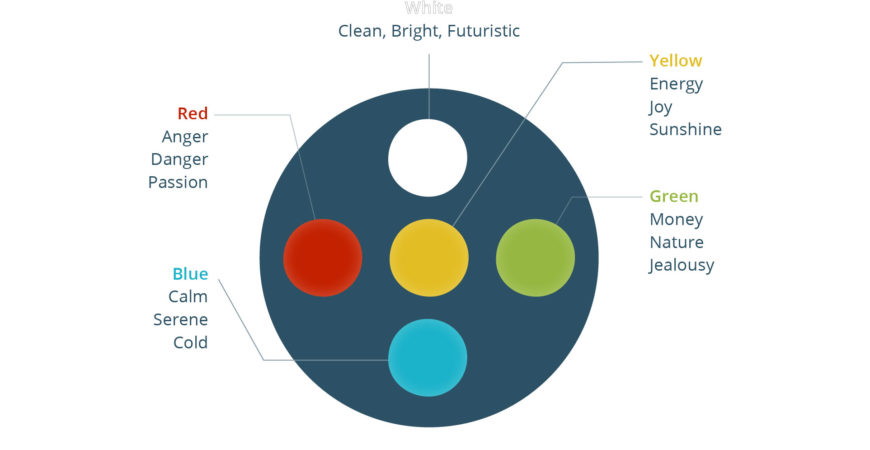
With any production or presentation, the aim is to engage with your audience, keep their attention and with drama pieces to evoke a variety of emotions or moods. Introducing coloured lighting can be one of the most effective ways to create a desired effect, adding depth to a scene or to emphasize a point. Perhaps the script calls for the audience to feel a sense of trepidation, fear or joy – and all of this can be achieved with the correct lighting to make a far more powerful impression.
This chart above shows a wide variety of moods and emotions that even a basic set of colours can produce.
If you are trying to decide how best to light your production, consider how you would like your audience to feel in each scene. For example, blue, green and purple will convey darkness, growth and even magic, whilst red, amber and yellow can make an audience feel warmth, energy and intimacy. The intensity of the colour will emphasize the mood, where as using a pastel or less saturated colour will have a subtler effect.
For St Anne’s School in Weston-super-Mare, an OpusSystem user, introducing a wash of blue light successfully brought a chill to the air during the children’s performance of scenes from “Frozen” – and all through the user-friendly OpusHub control console. (Pictured above).
Whether you’re working on a school production or devising a piece of drama for forthcoming GCSE or A-Level exams, using lighting is a great way to get students involved, helping them to develop the character they are playing and understand what mood each scene demands. With OpusSystem integrated audio visual and lighting solution, students (including those reluctant to be on stage) can be given an equally important technical role, gaining hands-on experience of devising, planning and controlling lighting effects.